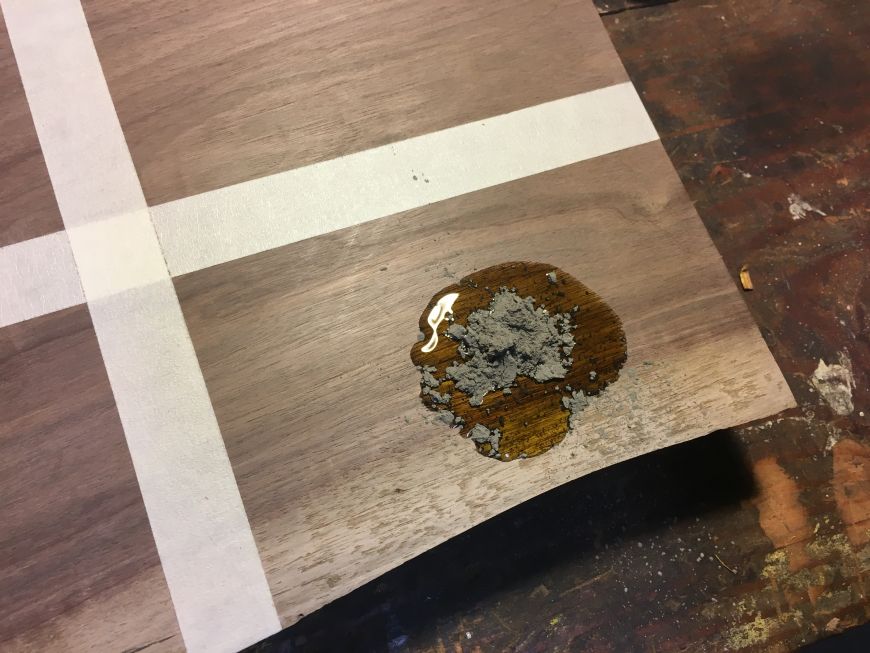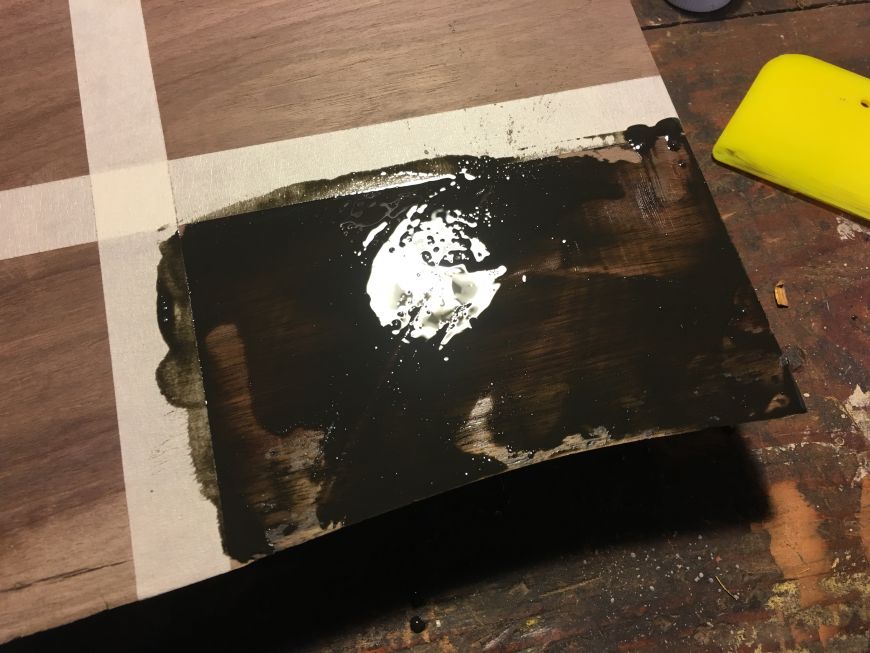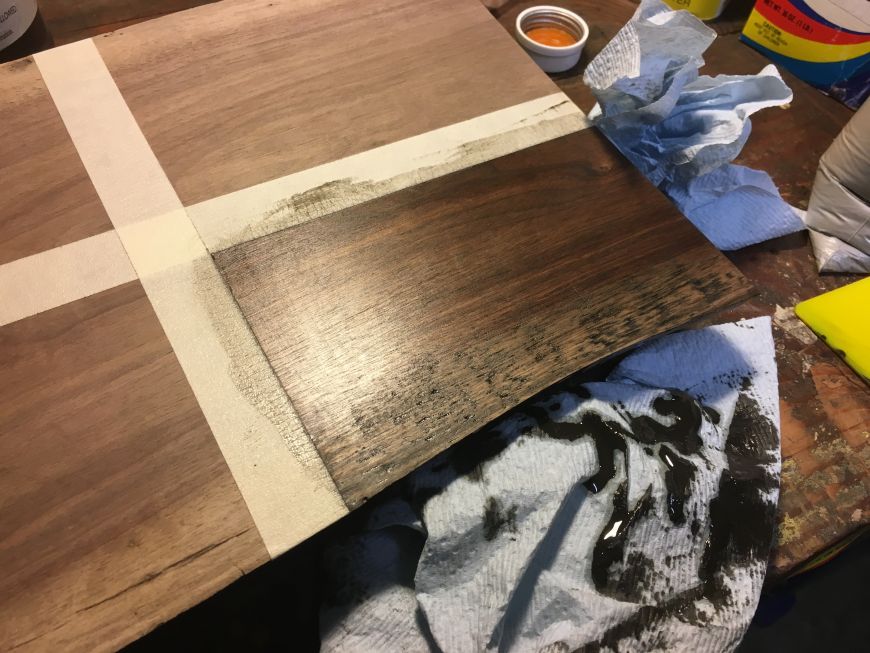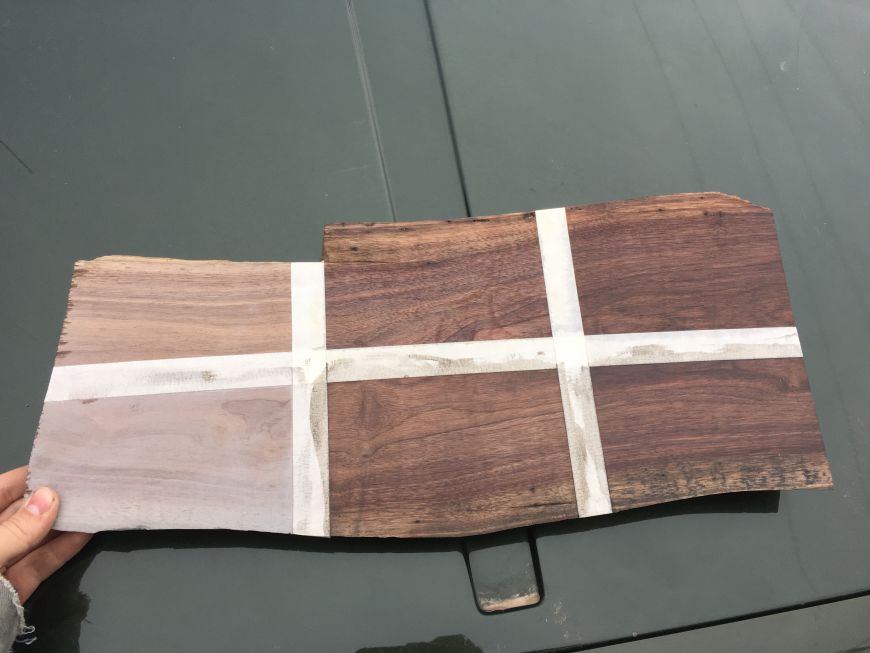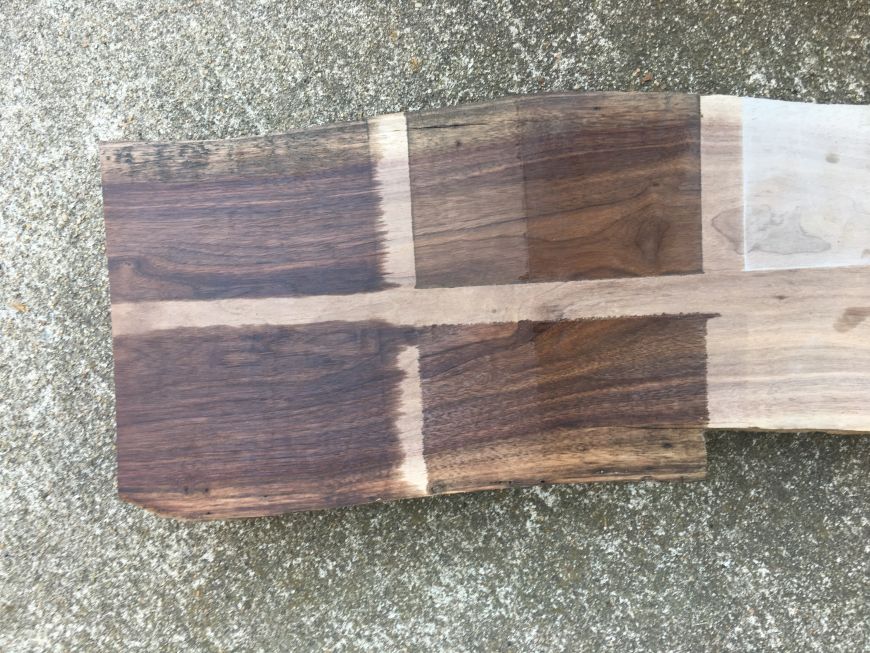I'm getting ready to finish some walnut live-edge slabs and I wanted to test some different finishes and techniques on a scrap piece first.
I'm building a live-edge around-the-room shelf around the perimeter of the sun room in the house we just bought, and they will be used to set plants on. It should be pretty stunning once it's complete. This is why the finish must be eye popping! However, it's a sun room and walnut will fade to a boring tan color in sunlight, and if they're primarily for therefore I need a spar-urethane or spar-varnish. I chose a water-based spar urethane (Varathane brand, semi-gloss) to go over the oil finish because it will add zero amber tones unlike the oil-based (this is my inference, I could be completely wrong), I just don't want this walnut to loose any of the purple colors!
The two oils I'm testing are:
- Tru-Oil by Birchwood Casey. This is a very high performing tung oil that contains catilists and additives to help it dry faster and perform better.
- Boiled Linseed Oil, or BLO: A very slow drying oil. I may have to add a layer of sanding sealer or shellac between it and the water-based spar urethane I intend on using
I also wanted to experiment with filling the grain with rottenstone. Rottenstone is crushed limestone and it's used in french polishing as the final, super super fine abrasive powder to achieve the mirror-like finish. However, and not many people know this, it can also be used as a dark, natural grain filler. Or, at least, that's what I read online and wanted to experiment with myself. Anything to make the grain *pop* even more would be worth the effort!
To use it as a grain filler, I poured a dab of oil (BLO in this photo) and sprinkled on a little rottenstone power.
Then I mixed it on the board with a plastic scraper (used for auto body work) and once it was mixed up real well I spread it out over the surface. After doing this a few times I learned that it was much easier just to mix it up and spread it around with my finger.
Then I wiped it off, using the scraper, across the grain so that it would not pull the grain filler out of the pours in the wood. Then I lightly buffed with a paper towel to remove excess.
I did this to all the cells in the bottom row in the grid I made on the test board. The one on the bottom left, I filled the grain with rottenstone but used water instead of oil.
The layout of the experiment is:
| blank | Tru-Oil | boiled linseed oil |
| rottenstone applied with water | Tru-Oil and rottenstone | Boiled linseed oil and rottenstone |
And here's the results:
The next morning and in diffused sunlight:
Wow! I though that the rottenstone would make the wood darker and make the grain look much more dramatic. Wrong! Instead, it's looking much more muted then their non-grain-filled counter parts. You can see this is the bottom left corner where rottenstone was applied with water and no oil at all. It's like it has a grey film on top of it. It also made any imperfections int he sap would much more visible.
You can also see that, on walnut, BLO darkened the wood just a wee bit more than the Tru Oil, but both darkened it quite a lot compared to the unfinished wood. BLO is supposed to be the best at making the grain pop on walnut, but compared to Tru-Oil, I don't know if that's true. So, for my project, I think I will go with the Tru-Oil with or without rottenstone. It's going to look great!
I also performed the same experiment on a piece of (red?) oak I had lying around. Tru-Oil on the left column, BLO on the right column and rottenstone on the bottom row.
You can see that the rottenstone completely changed the appearance of the oak to be much darker this time! And there was also a very noticable difference between the Tru-Oil on the left and the BLO on the right. The BLO added a lot more color. For any future oak projects, I'm definitally using rottenstone.
Update:
Here's how it looks after a second application of both the tru-oil and BLO to the left half of their respective squares:


